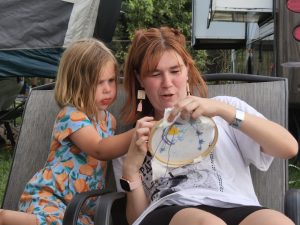
Do you know a young person who has faced tremendous adversity, yet grown up to be a very successful adult? I am often amazed when I see a young person go through a particularly challenging or traumatic time in life, yet thrive in spite of the circumstances. Understanding Developmental Assets can help us to understand how and why this happens.
Research from The Search Institute has identified 40 positive supports (developmental assets) that can help young people thrive. These supports act as protective factors for youth, helping to insulate them against the negative things that may be occurring in their lives. A few examples of these protective factors include external support such as positive family communication, a supportive school climate, high expectations, and time spent in youth programs. A child’s own internal assets are also important to his or her thriving. Examples of internal developmental assets include characteristics like responsibility, commitment to learning, and a sense of purpose.
All youth benefit from these developmental assets–and the more they have, the better! How can you help the young people develop the internal assets they need to press on, especially during times of adversity? What can you do to serve as an external support for youth in your family, community, or organization?
